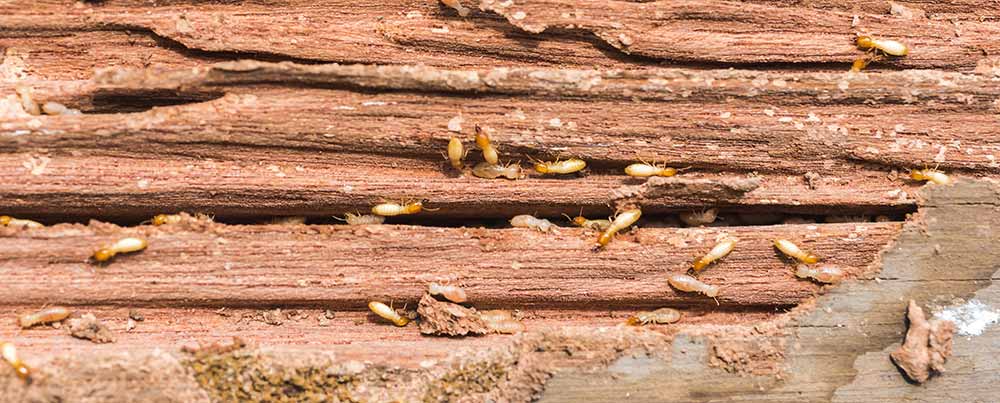
The best course of action is to hire a pest control professional who has the necessary training and equipment to control and prevent termite infestations. The two most commonly used termite controls are liquid barrier treatments and baiting systems. Comparing their effectiveness is difficult because of the differences in the way each is applied and the way they work. Both treatments have their benefits and drawbacks.
Liquid treatments, such as Termidor and Premise, establish a continuous chemical barrier around the foundation’s perimeter to block termite entry to the structure. Those attempting to penetrate the treated soil are either killed or repelled. The treatment involves injecting a liquid pesticide into the ground along the house’s foundation, beneath concrete slabs, and in holes drilled into porches, steps, and slabs. Liquid treatments provide a chemical barrier giving immediate protection that can last several years. However, periodic inspections by the pest control professional will still be necessary to assess the treatments’ effectiveness.
Liquid treatments have some limitations. Any activity that disrupts the soil can potentially cause a gap in the barrier to developing, which allows for termites to have access to the structure. Homeowners often do not like the drilling and disruption that the application of these treatments requires. Chemicals introduced into the soil around the structure may also be a concern. The application of high rates of chemicals, often 150 to 200 gallons of the pesticide, is necessary to achieve adequate coverage.
Bait treatments, such as Sentricon, Exterra and Advance, are an alternative to liquid termite control barriers. The baits work by taking advantage of the foraging and food-sharing behavior of termites to disperse small quantities of the pesticide to others in the colony. Baiting stations are put into the ground, generally at spacings up to 20-foot intervals around the structure’s perimeter. Untreated wood monitors are placed inside each station. They are inspected monthly or quarterly, and if live termites are found inside the station, a bait laced with an insecticide is placed in them. The pest control professional has to periodically return to your home to monitor the stations, usually every three months. However, Sentricon has developed a new baiting system, Always Active, called Active, where the station is placed in the ground with the bait in it. The termite control company checks the station once a year.
The baiting system is a more environmentally safe way to control termites since reduced amounts of insecticides are used. It is a more viable option in situations where liquid treatments are more complicated and less disruptive to the structure. Also, baits are a better choice for people who suffer chemical sensitivity. They do have some drawbacks. The stations do not directly protect the structure since the termites must first find their way to the baiting stations; the baits do not attract them. Actual control may take time. Many homeowners mistakenly believe the baits will attract termites closer to the home when all they do is detect termites that are naturally present. The homeowner should expect and even insist on a building inspection once a year.
So which termite treatment is the best? That depends on your specific situation. There are positives and negatives to using both types of treatments. Your pest control company can discuss the various treatments and what kind of services you will be getting for the costs involved, which can vary by treatment choice and provider.

Timothy Daly is an Agricultural and Natural resource Agent with the University of Georgia Extension Gwinnett County. He can be reached at 678-377-4011 or tdaly@uga.edu.

